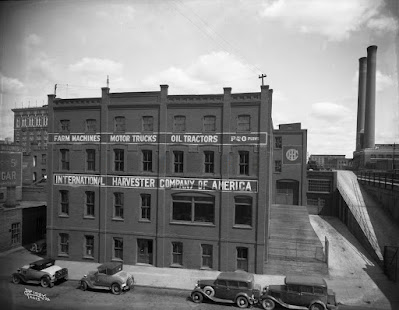In the fall of 1927 an inexperienced teenager saw pictures in a farm magazine where power from tractor wheels were being used for pulling purposes. An obsession hit him. He wanted a tractor in front of his plows, and other things, instead of horses. There was no way to be happy without a tractor. He talked his dad into mortgaging the farm.
The half-size farm did have enough value to guarantee a 15-30 tractor. It was the biggest one International Harvester built at the time. It took weeks before it arrived on a flatcar.
One special day, there it was! A shiny new tractor sitting next to the Davenport depot. While dad was busy putting all the wheel lugs into the back of our old Essex, I was pouring water into the empty radiator. It took a lot of cranking before we found out there was no gas in the tank.
The tractor was steered down the road where it was going to spend the rest of its life. Before reaching home, Jack Telford flagged me down. He wanted to know if I really intended to farm with that rig, and what I was going to use for traction when the ground got soggy.
The next day, horseman Bandy stopped in to let me know that this tractor would be of some use back in the corn country. Butterfly feelings hit my stomach as lugs and rims were being installed to the tractor wheels.
The first job the tractor had to do was to pull some plows. It was quite a sweaty job steering around all those fence posts as the field was being opened up. Clumps of neighbors began to show up and were waiting by the starting corner of the field. They were wanting to see how the stubble was getting plowed without the aid of live horse-power.
After clutching the tractor out of gear, it was like parking in a group of critics. A ray of encouragement came over me when Herman Maurer said he wouldn't mind having a tractor like mine if he had all level land.
The rest didn't think that way. "It will pack the soil too much," they said. Also, "It burns gasoline. Hay is cheaper." "If I run out of hay, I can get my fields plowed on stubble pasture." Fred Koch asked, "Why do you want to take on more farm expenses?" He stated he had to tear down his combine motor every season after averaging only three weeks of running. The rings and bearings were shot by then.
In those days, good air cleaners were not invented yet. Homemade ones usually had to do. The Fred Koch Special was a gunny sack placed over the intake pipe. It did keep out straw, and other flying objects, allowing only clean dust to enter the motor.
Before the year was out, lo and behold, my tractor started making smoke instead of power! All that unfiltered dust had ground the rings down to a thin image of themselves. Even the lowest gear was too painful for the dusted out motor. The tractor did manage to limp back to the barn, where it was parked in the back stall for an overhaul job.
The partly finished field caused Quentin Maurer to ask why I took a vacation from farming. I don't remember how I answered that question. It must have been a vague one. After all, it was sort of a classified secret to save the reputation of future tractors. Later, an intake pipe was installed, reaching a height of eight feet above tractor height. A decent air filter was then bolted on.
Anyway, the seeds for future tractors finally got planted out here at Rocklyn. The next year Charlie Rux got antsy and swapped his string of nags for a Holt 30 tractor. Soon to follow was the Grob brothers. For a spell, the Great Depression checked the flow of tractors taking over the farms. Finally, when Roosevelt pulled the right economic levers, sounds of tractors could be heard in about every field.





Comments
Post a Comment